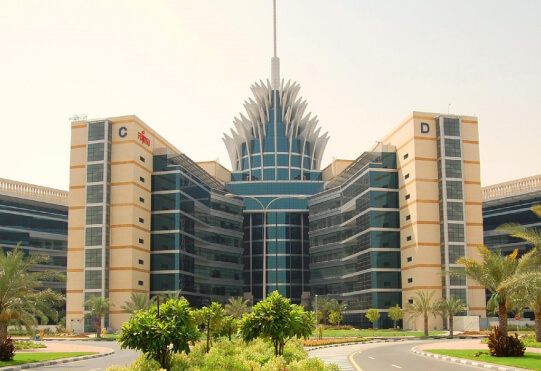In less than two months from now, the United Arab Emirates is hosting the ‘Conference of Parties,’ an annual climate change conference organized by the UN, also known as COP28. The event will be a significant moment for the world to see the results of the actions taken by governments across the globe against climate change. By hosting it, the UAE will inevitably draw attention to its own Net-Zero program and its current implementation. Saudi Arabia, its closest neighbor and world’s biggest oil exporter, will also be in the spotlight.
Historically, the UAE and Saudi Arabia have relied heavily on fossil fuels as the cornerstone of their energy production and economic advancement. Both countries are on the list of countries most at risk of experiencing the full force of global warming, due to their location on the map, a desert climate, and lack of water.
That is why, in recent years, the UAE and Saudi Arabia have been actively moving away from their traditional dependence on oil and gas. This shift has been driven by their aspirations to develop more diversified and resilient economies, as well as their commitment to mitigating the adverse environmental effects associated with the fossil fuel industry.
It is not a coincidence that the two countries announced their net-zero commitment just two months apart from one another. Competing on a global scale for the image of the regional leader, the two countries have made their net-zero programs part of their long-term development strategies, aimed at sending a signal to global businesses and investors.
Today, the UAE is implementing the Net Zero by 2050 strategy to achieve net-zero emissions by 2050, making the Emirates the first Middle East and North African nation to do so. Saudi Arabia, due to its much heavier reliance on oil, has set its net zero goal for 2060. The two countries’ strategies are quite similar and are based on their geographical location, economic structure, climate conditions, and heavy reliance on oil and gas.
The Saudi Vision 2030 plan contains many measures to advance the net-zero agenda. The measures are aimed at making a shift towards clean energy, having 50% of its energy come from renewable sources by 2030.
The UAE’s approach to addressing climate change and reducing greenhouse gas emissions centers around implementing clean energy solutions. Therefore, main sectors, like energy, industry, infrastructure, and others, are now updating their plans, strategies, policies, and initiate projects to achieve net-zero emissions by 2050. In September 2023, Abu Dhabi National Oil Company (ADNOC), the UAE’s oil and gas giant, announced that it is working on one of the largest carbon capture projects in the Arab Gulf [1]. It will trap carbon dioxide from the Habshan gas processing plant and store it safely and permanently underground. Simultaneously, Saudi Arabian giant Saudi Aramco is also working on the CCS project to capture carbon dioxide from a number of its gas plants [2].
To become the first country with net-zero emissions in its region, the UAE began financing clean energy projects more than 15 years ago. Additionally, the UAE actively supports global green infrastructure and clean energy programs, having invested in renewable energy projects across 70 countries.
As part of Vision 2030, Saudi Arabia is also investing heavily in renewable energy sources, such as solar and wind power and implementing energy efficiency measures. Several Saudi media sources reported that the country’s 2023 budget incorporates ten renewable energy initiatives, collectively generating a capacity of 7 gigawatts [3]. Additionally, Saudi Arabia prioritizes environmental conservation and biodiversity protection through initiatives like wildlife sanctuaries and sustainable tourism projects. Vision 2030 extends to urban areas, promoting sustainable urban greening for improved quality of life.
The key component of the net-zero efforts of the UAE and Saudi Arabia today is carbon capture and storage (CCS) technology, which reduces carbon emissions from industrial processes by capturing carbon dioxide and storing it deep underground to prevent it from entering the atmosphere. The Middle East currently accounts for approximately 10% across three large-scale commercial CCS facilities, including the Uthmaniyah CO2-Enhanced Oil Recovery (EOR) Demonstration Project in Saudi Arabia and the Al Reyadah CO2-EOR Project in Abu Dhabi, the UAE [4].
The Uthmaniyah CO2-EOR Demonstration Project’s goal is to assess the applicability of sequestering carbon dioxide in a mature zone within an oil reservoir. The project became operational in July 2015 and involves the capturing, compression, and dehydration of carbon dioxide from the Hawiyah Natural Gas Liquids (NGL) Recovery Plant.
Similarly, the Al Reyadah Project, known as the Abu Dhabi CCS, is situated onshore in Mussafah and is the world’s first commercial-scale CCS facility designed to capture carbon dioxide emissions from the steel industry. Phase 1 became operational in 2016. The project captures, compresses, and dehydrates up to 90% of carbon dioxide from an Emirates Steel production facility in Musaffah.
By leading the world in fossil fuel production, the UAE and Saudi Arabia are also trying to take leadership in championing CO2 emissions reduction, reinvesting petrodollars made today into the green projects of the future. The question is, are these efforts sufficient to prevent the uncontrollable climate change? Only the future will give us that answer. However, what we can be sure of today is that, propelled by competition, neither of the two countries will stop where it stands now. And in the coming years, we are likely to hear about some even more ambitious projects from both of them.



